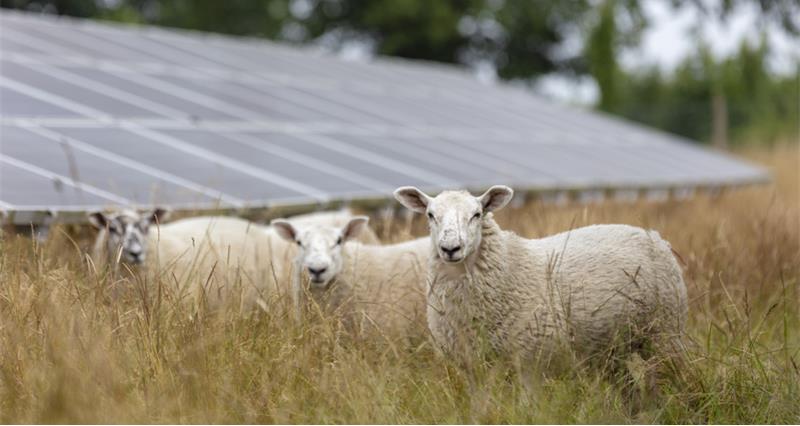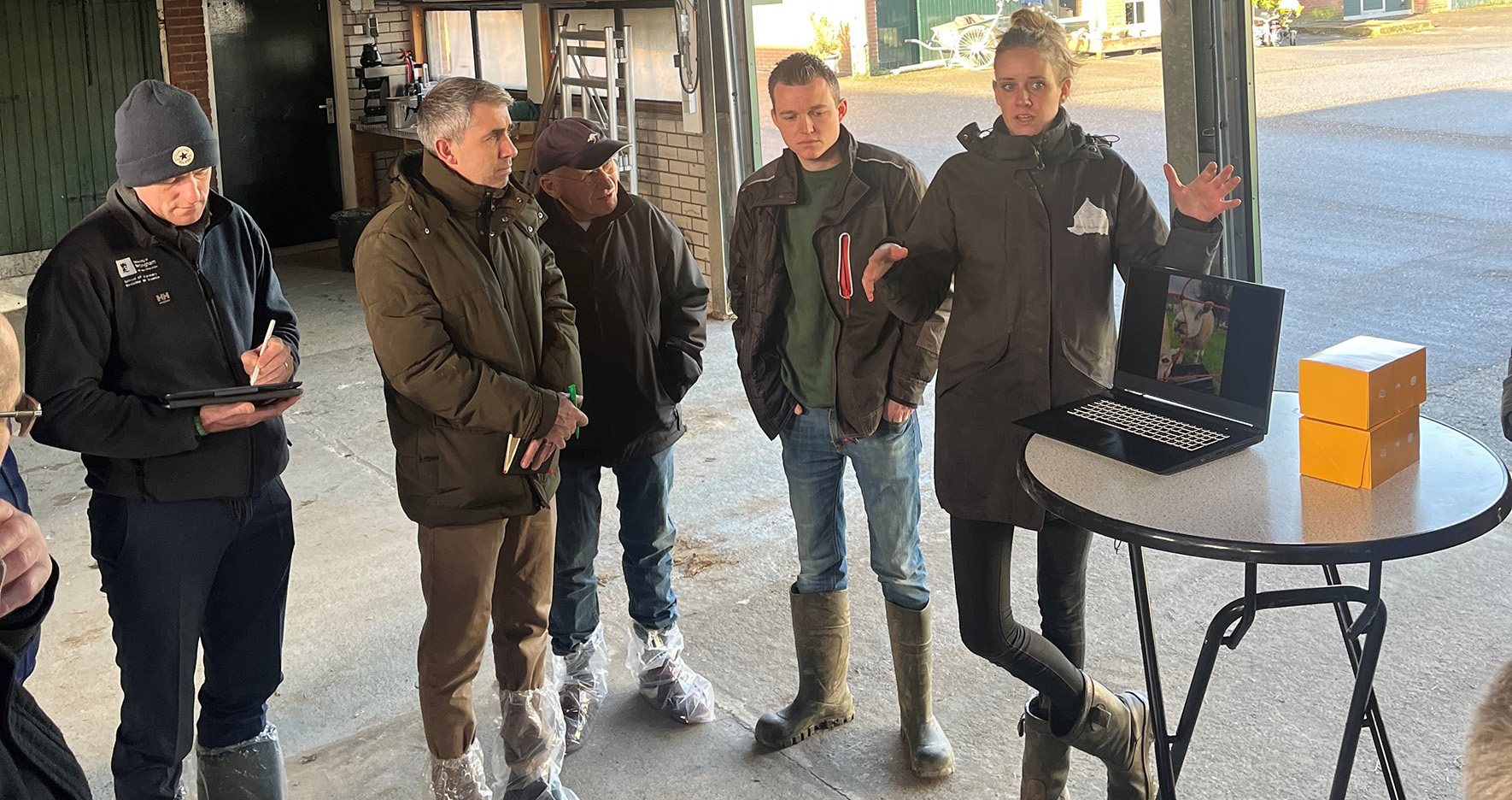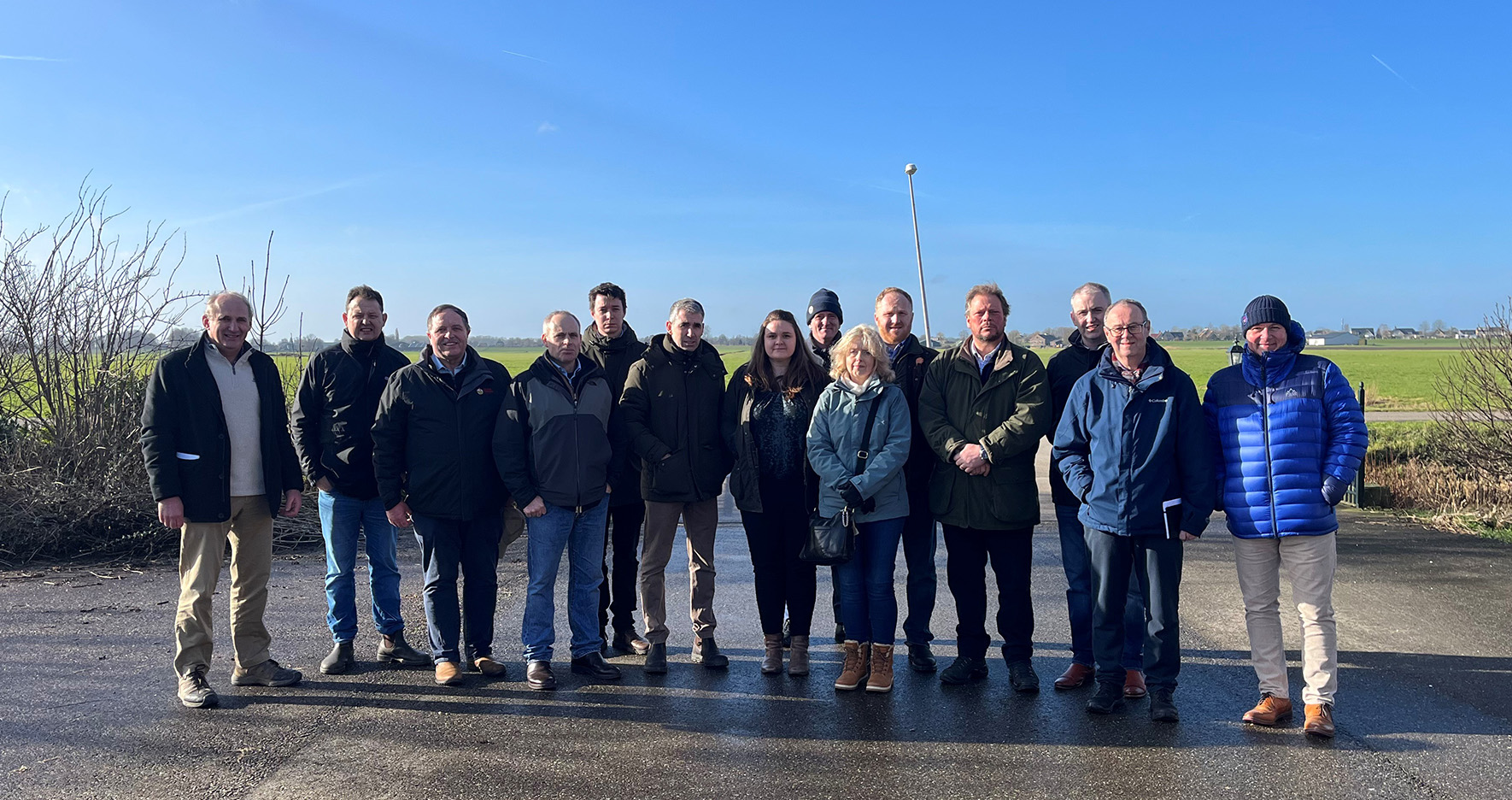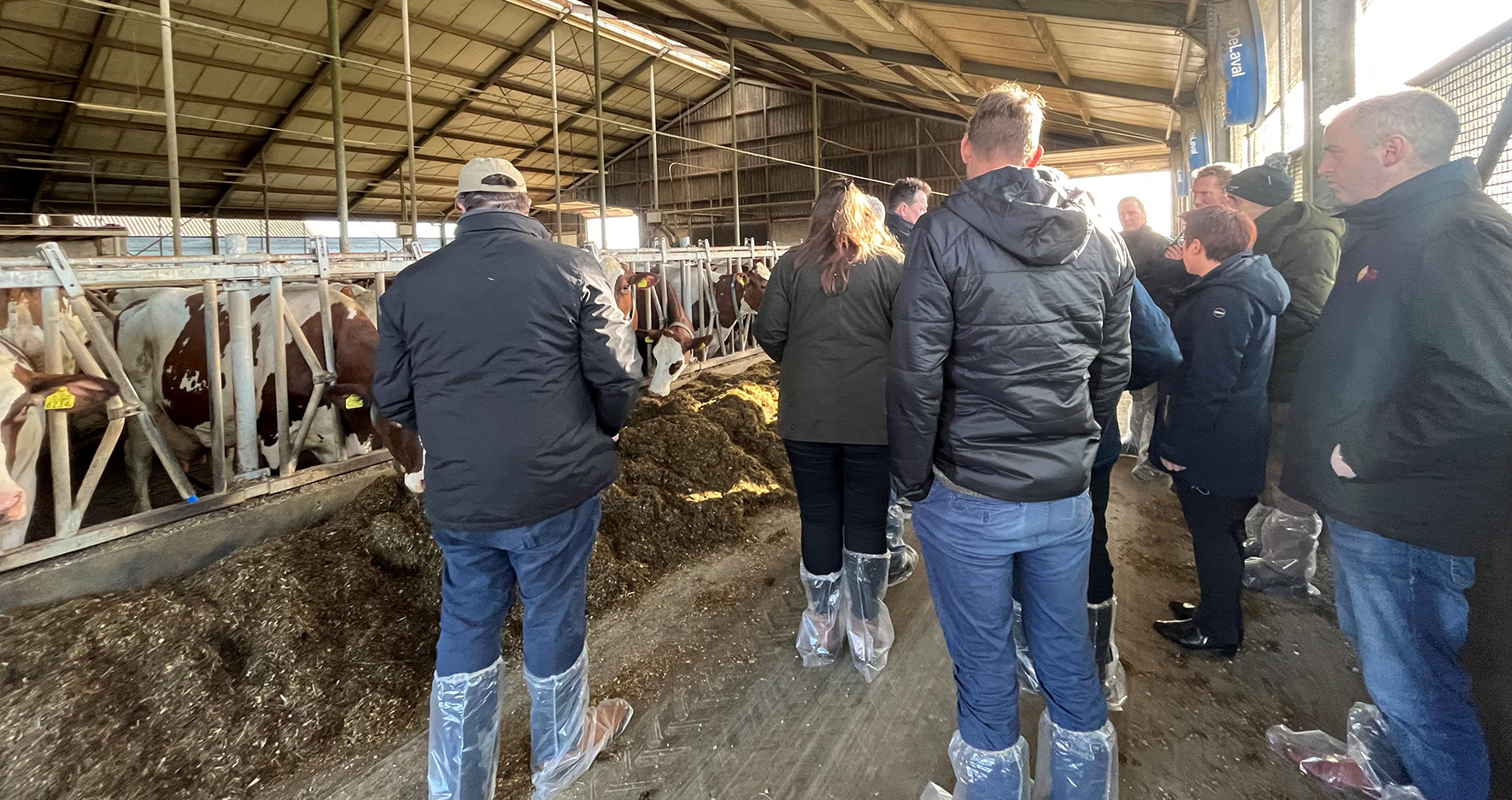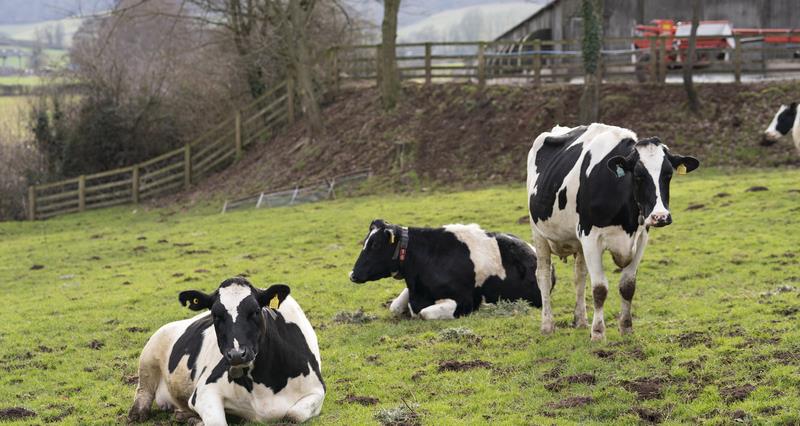When the first five cases of BTV-3 (Bluetongue virus serotype 3) were reported in the Netherlands on 5 September 2023, little did the industry expect that by January 2024, almost 6,000 cases would be reported.
Affecting both sheep and cattle (but also goats, alpacas, and wolves), BTV-3 has had far reaching impacts not only on the health and welfare of animals in the country, but also the well-being of farmers.
While there are more than 30 sub-types of BTV, this marks the first detection of serotype 3 in Europe. Scientists don’t know how the virus made its way into the Netherlands, but the virus has had far reaching impacts on the Dutch industry. The disease has also been reported in Germany and Belgium.
Grasping the impact of BTV
To comprehend the severity of cases first hand, our group’s journey began at sheep farm in Nieuwkoop, Western Holland. After first noticing the signs of BTV in autumn 2023, 65 sheep from a flock of 250 died.
Sheep have shown the most severe clinical signs, and the delegation learned of the progression of symptoms – initially manifesting as mouth and knee lesions then evolving into lameness and severe respiratory and renal complications.
Mortality rates in sheep are higher than other species including cattle, although rates can vary. To date, it is thought that the Netherlands has lost 5% of its sheep flock since the onset of the virus in autumn 2023.
Bluetongue virus is having a serious impact on Dutch livestock farms. @NFUtweets regional livestock board chairs @Farmerdbarton @English_Farmer & @Sondesplacefarm pic.twitter.com/O9PiF8rJ3b
— John Royle (@JDRoyle) February 1, 2024
BTV’s effect on the Dairy industry
The group then headed to Harmelen to visit a dairy farm also impacted by BTV-3. Milking 90 Red Holstein cows in a traditional system across 50 hectares, the farm was infected with BTV in the autumn.
The mortality rate for cows is lower than for sheep, but at the virus’ peak, nearly 1,000 extra cows were dying each week. It is estimated that 0.2% of the Dutch cattle population have died. Early signs of the virus on the farm included nasal discharge and ocular moisture in the cows, followed by tongue lesions.
Among the herd, 30 cows tested positive for BTV-3, with 10 exhibiting severe symptoms, and 20 minor symptoms. The farm unfortunately lost one cow to the disease, but they also experienced a notable drop in milk yield. Overall, the impact on the 1.5 million strong Dutch dairy herd has been expansive with a reduction in milk production for almost every cow infected with BTV.
The impact that BTV-3 has had on the Dutch livestock sector has been immense. The virus has not only impacted the profitability of the farms and reduced food production, but also caused enormous emotional turmoil for farming families.
The Dutch approach to virus control
Thanks to the onset of colder weather, we are currently in a low-vector period meaning the midge activity is low. However, as temperatures increase, scientists anticipate that the virus will spread again.
With cases in England already passing the 100 mark in February 2024, there is a real concern of BTV-3 spread in the UK. Currently, there are no viable solutions to halt the spread of the virus.
Producers in the Netherlands were advised to keep their animals housed with good ventilation as this was thought to slow the rate of infection. So far, evidence suggests that although this reduces the number of cases and the severity of clinical signs, it cannot prevent further cases of BTV-3.
Insecticides and repellents do not prevent infection and there is no work ongoing that demonstrates chemical insecticides help reduce midge levels and reduce the number of infections. Producers in the Netherlands were also advised not to share needles.
This means that the only viable solution remains a vaccine. There is currently no BTV-3 vaccine authorised for use in the EU, and there are no suitable vaccines in third countries.
Whilst Dutch colleagues are aware that several companies are trying to develop a vaccine, one might not be available until early 2025.
It is essential that the European farming industry collaborates and works together to find an effective and affordable vaccine for BTV-3 that can be deployed as soon as possible.
The European industry must come together to support, develop and deliver an effective vaccine for farmers to protect them against the devastating impacts of BTV-3.
— Kate Adams (@_Kate_Adams) February 2, 2024
Many thanks to @LTONederland for organising.
Some 📷 below 👇🏻 pic.twitter.com/1Bh07DDaKX
“A sobering experience”
“Seeing the impacts of BTV-3 first hand in the Netherlands was a sobering experience,” said NFU’s Chief Livestock Advisor, John Royle.
“Farms across the Netherlands have seen very high mortality rates, especially in sheep and the impact on profitability has had a significant mental toll on the farmers,” he said.
“Due to the spread of the disease, the Dutch authorities have taken a very different approach to the BTV outbreak and have not imposed temporary control zones and strict movement restrictions as we have done in England.
“Evidence also suggests that our native midge population is not yet infected – a key aspect of the UK authority’s response.
“Although we have not seen any clinical signs of disease, potentially reflective of the viral load, we must do all we can to slow the spread of the virus until we have an effective and affordable vaccine we can deploy.”
119357,119356,119355
